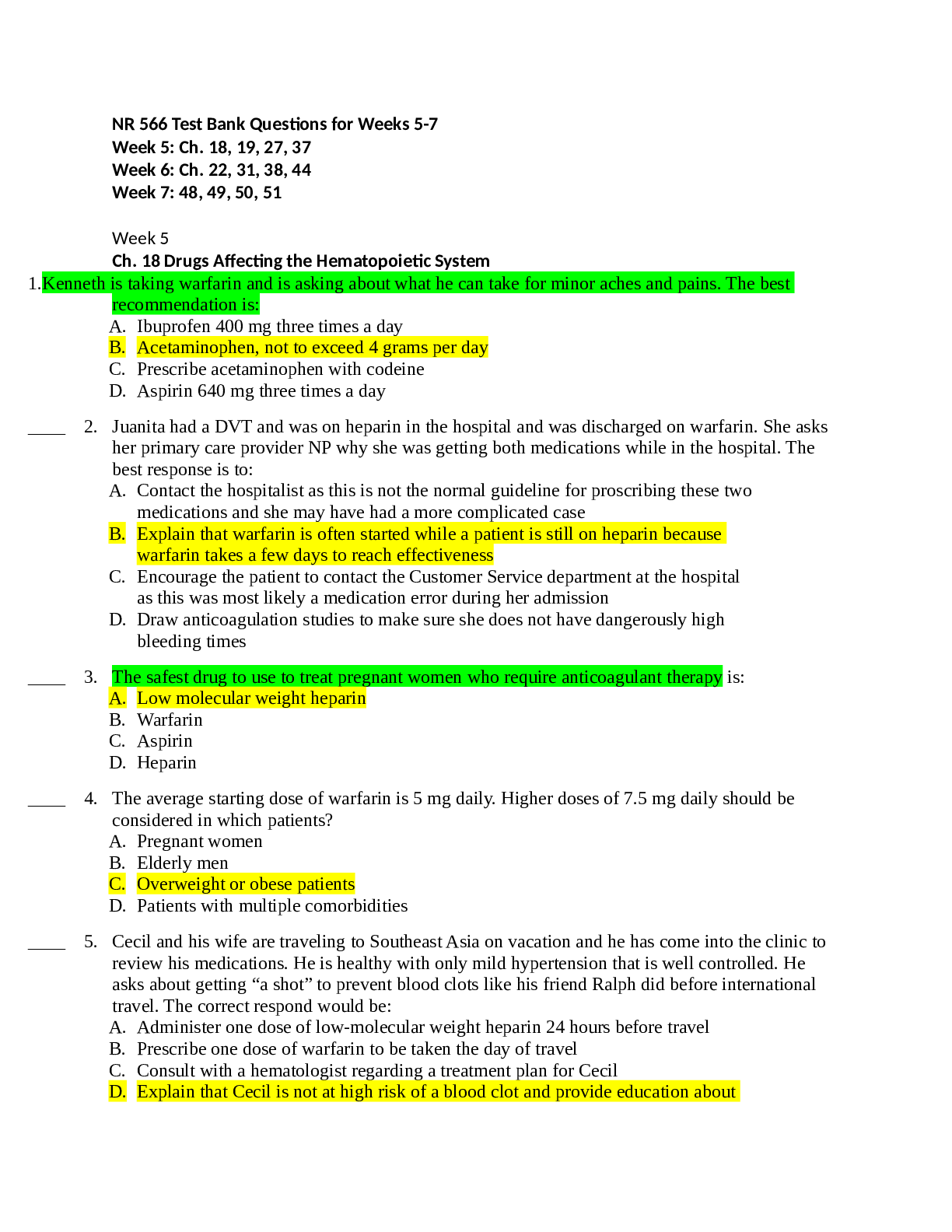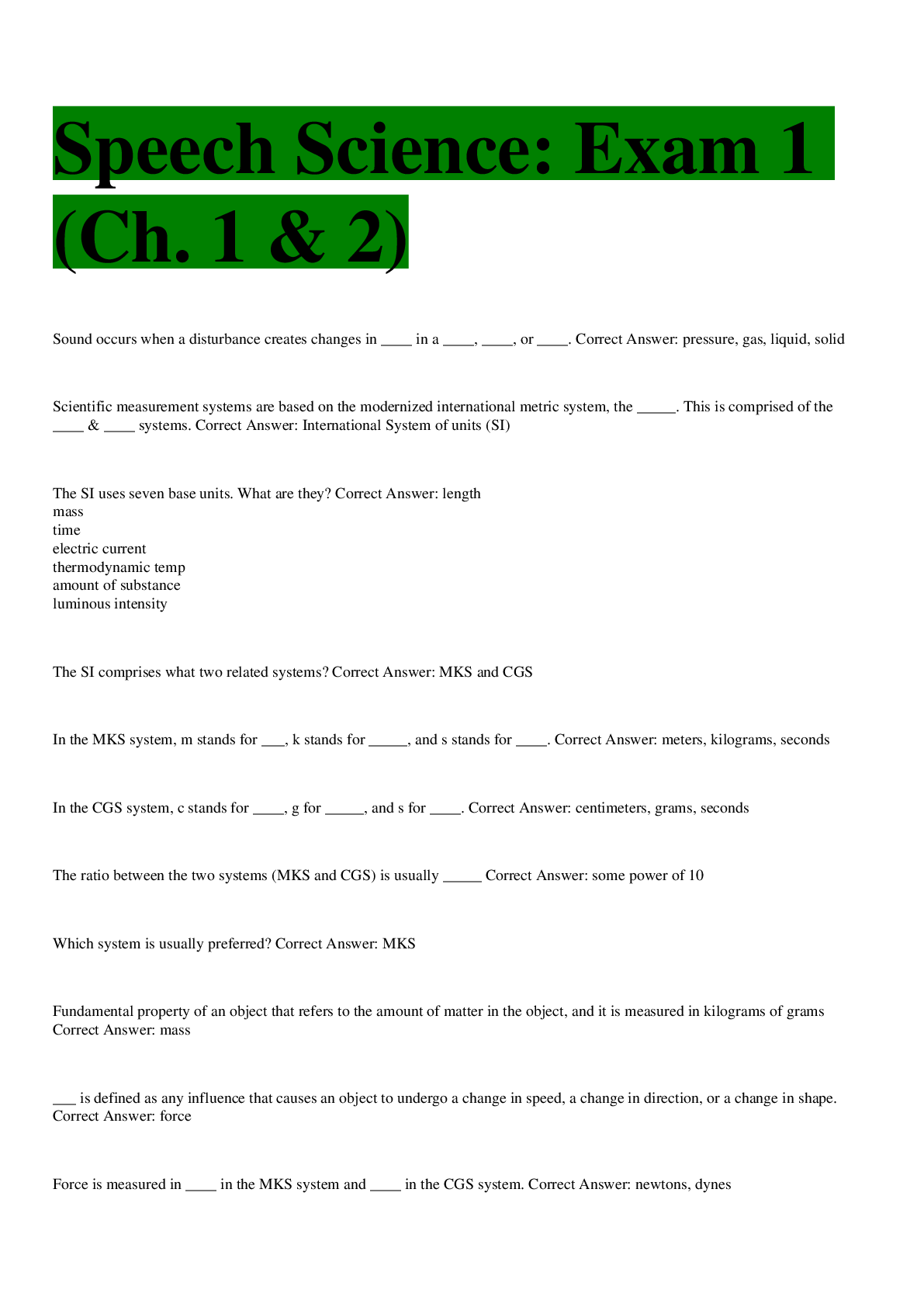*NURSING > EXAM > PSYC 435 - Abnormal Psychology, CHAPTER 7 to 9, Complete latest Test bank Questions and Answers, A+ (All)
PSYC 435 - Abnormal Psychology, CHAPTER 7 to 9, Complete latest Test bank Questions and Answers, A+
Document Content and Description Below
PSYC 435 - Abnormal Psychology, CHAPTER 7 to 9, Complete latest Test bank Questions and Answers, A+-7.1 Describe the types of mood disorders, their primary symptoms, and their prevalence. What are ... the primary distinctions between depressive disorders and bipolar disorders? • Bipolar disorder is easily confused with depression because it can include depressive episodes. The main difference between the two is that depression is unipolar, meaning that there is no “up” period, but bipolar disorder includes symptoms of mania How prevalent are the two types of mood disorders? • lifetime prevalence rates of unipolar major depression at nearly 17 percent • bipolar disorder (in which both manic and depressive episodes occur), is much less common. The NCS-R estimated that the lifetime risk of developing the classic form of this disorder is about 1 percent (see also Goodwin & Jamison, 2007), How do the prevalence rates of depressive and bipolar disorders differ between the sexes? • Moreover, rates for unipolar major depression are always much higher for women than for men • and there is no discernible difference in the prevalence rates between the sexes. What are some of the basic demographic differences in the United States influencing rates of unipolar and bipolar disorders? • Nationally representative surveys of U.S. residents suggest that mood disorders occur less frequently among African Americans than among European white Americans and Hispanics, whose rates are comparable (Kessler, Chiu, et al., 2005; Williams et al., 2007). Native Americans, by contrast, have significantly elevated rates compared to white Americans (Hasin et al., 2005). There are no significant differences among such groups for bipolar disorder. 7.2 Distinguish between the different types of depressive disorders. What are the major features that differentiate dysthymic disorder and major depressive disorder? • Dysthymia is a milder, chronic form of depression that may last two years or longer. It affects about 1.5 percent of Americans. The symptoms of dysthymia are the same as major depression but people with dysthymia typically experience fewer symptoms. • dysthymic disorder or dysthymia) is a disorder characterized by persistently depressed mood most of the day, for more days than not, for at least 2 years (1 year for children and adolescents). In addition, individuals must have at least two of six additional symptoms when depressed ( • The diagnostic criteria for major depressive disorder (MDD; also known as “major depression”) require that a person must be in a major depressive episode and never have had a manic, hypomanic, or mixed episode Distinguish between recurrence and relapse. • Relapse is defined as a full return of depressive symptoms once remission has occurred - but before recovery has taken hold. • Recurrence refers to another depressive episode after recovery has been attained What are three common specifiers of major depressive disorder? Specifier Characteristic Symptoms • With Melancholic Features: Three of the following: early morning awakening, depression worse in the morning, marked psychomotor agitation or retardation, loss of appetite or weight, excessive guilt, qualitatively different depressed mood • With Psychotic Features Delusions or hallucinations (usually mood congruent); feelings of guilt and worthlessness common • With Atypical Features Mood reactivity—brightens to positive events; two of the four following symptoms: weight gain or increase in appetite, hypersomnia, leaden paralysis (arms and legs feel as heavy as lead), being acutely sensitive to interpersonal rejection 7.3 Describe the factors believed to cause unipolar mood disorder Summarize the major biological causal factors for unipolar depression, including genetic, biochemical, neuroendocrinological, and neurophysiological factors. • the prevalence of mood disorders is approximately two to three times higher among blood relatives of persons with clinically diagnosed unipolar depression than it is in the population at large • NEUROCHEMICAL FACTORS Ever since the 1960s, the view that depression may arise from disruptions in the delicate balance of neurotransmitter substances that regulate and mediate the activity of the brain’s nerve cells has received a great deal of attention. [Show More]
Last updated: 1 year ago
Preview 1 out of 26 pages
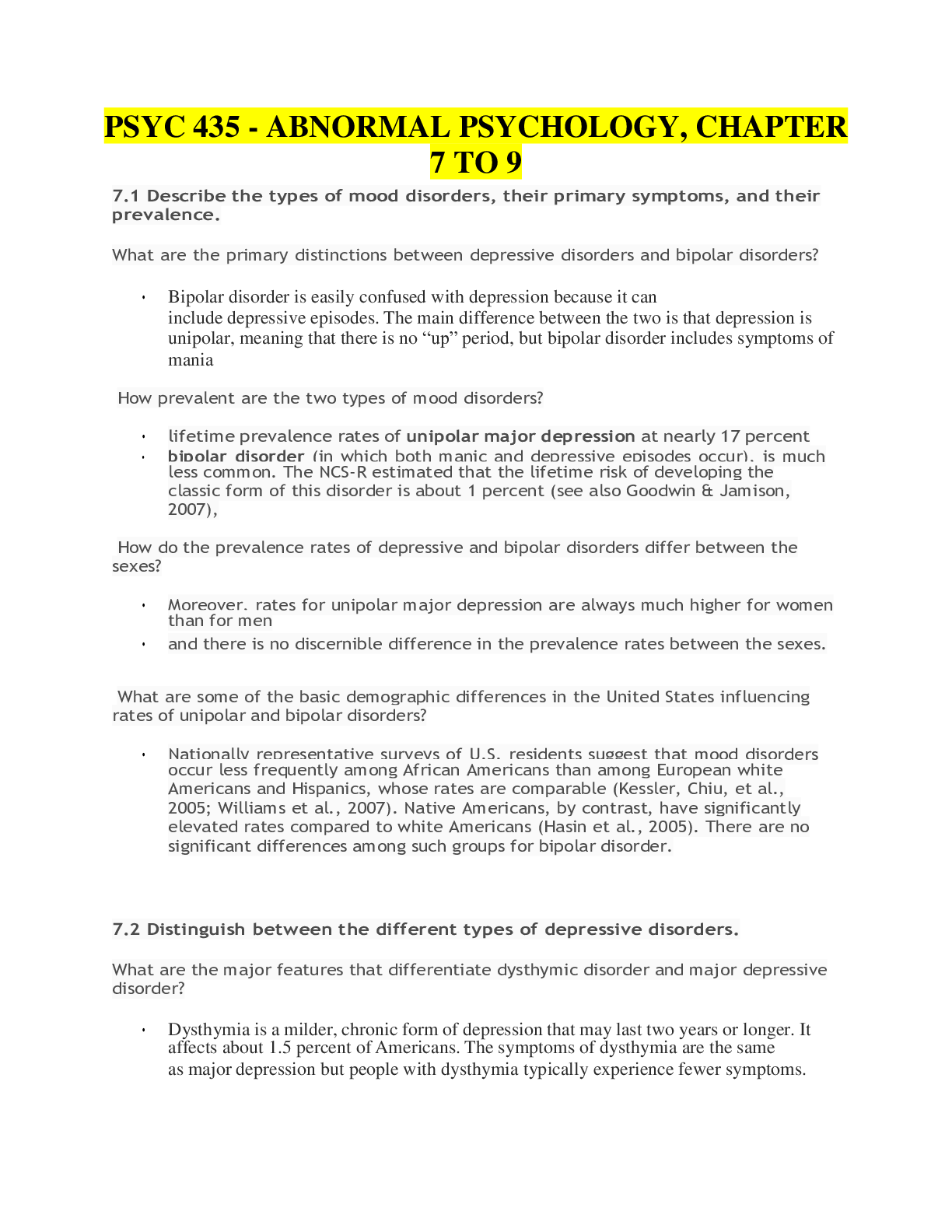
Reviews( 0 )
Document information
Connected school, study & course
About the document
Uploaded On
Jul 16, 2021
Number of pages
26
Written in
Additional information
This document has been written for:
Uploaded
Jul 16, 2021
Downloads
0
Views
39
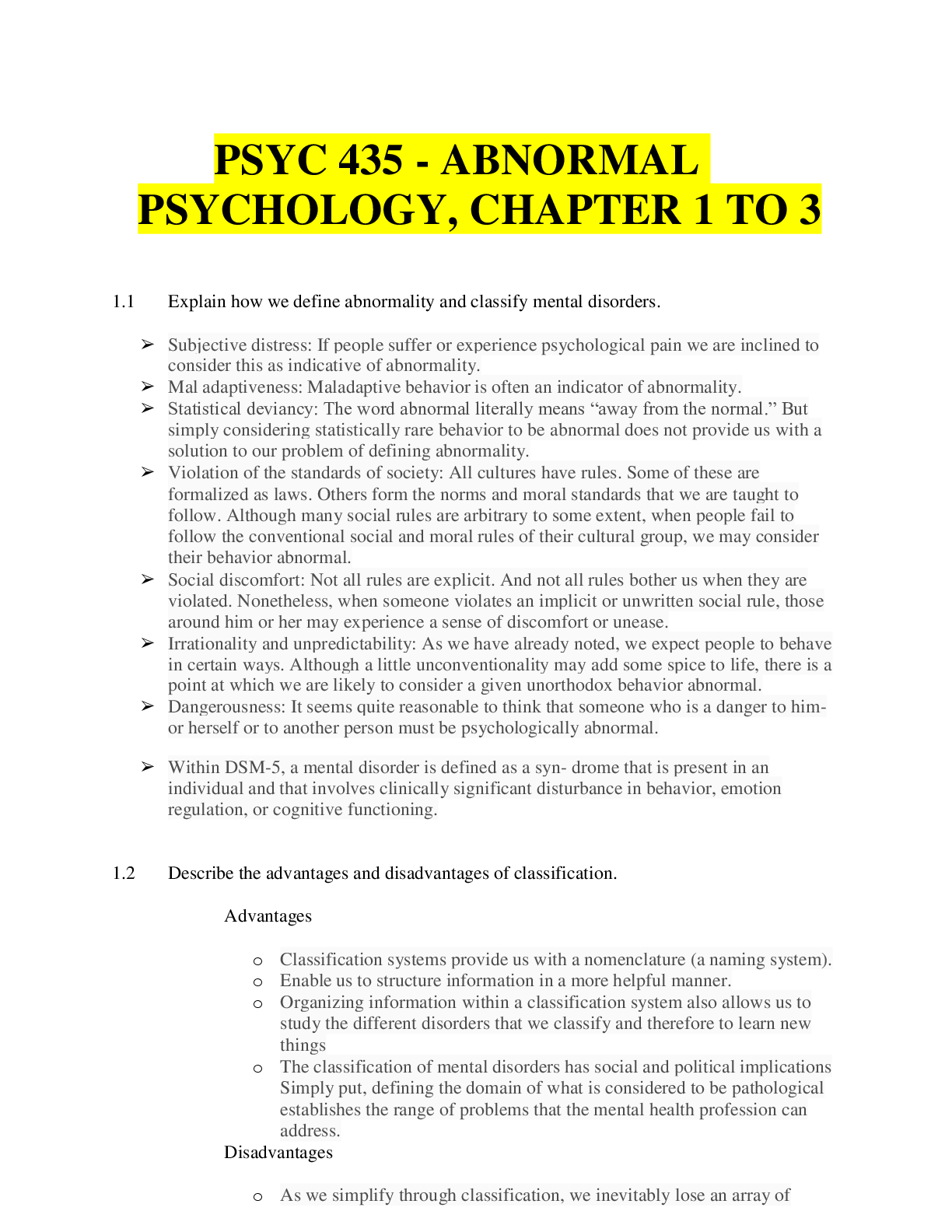






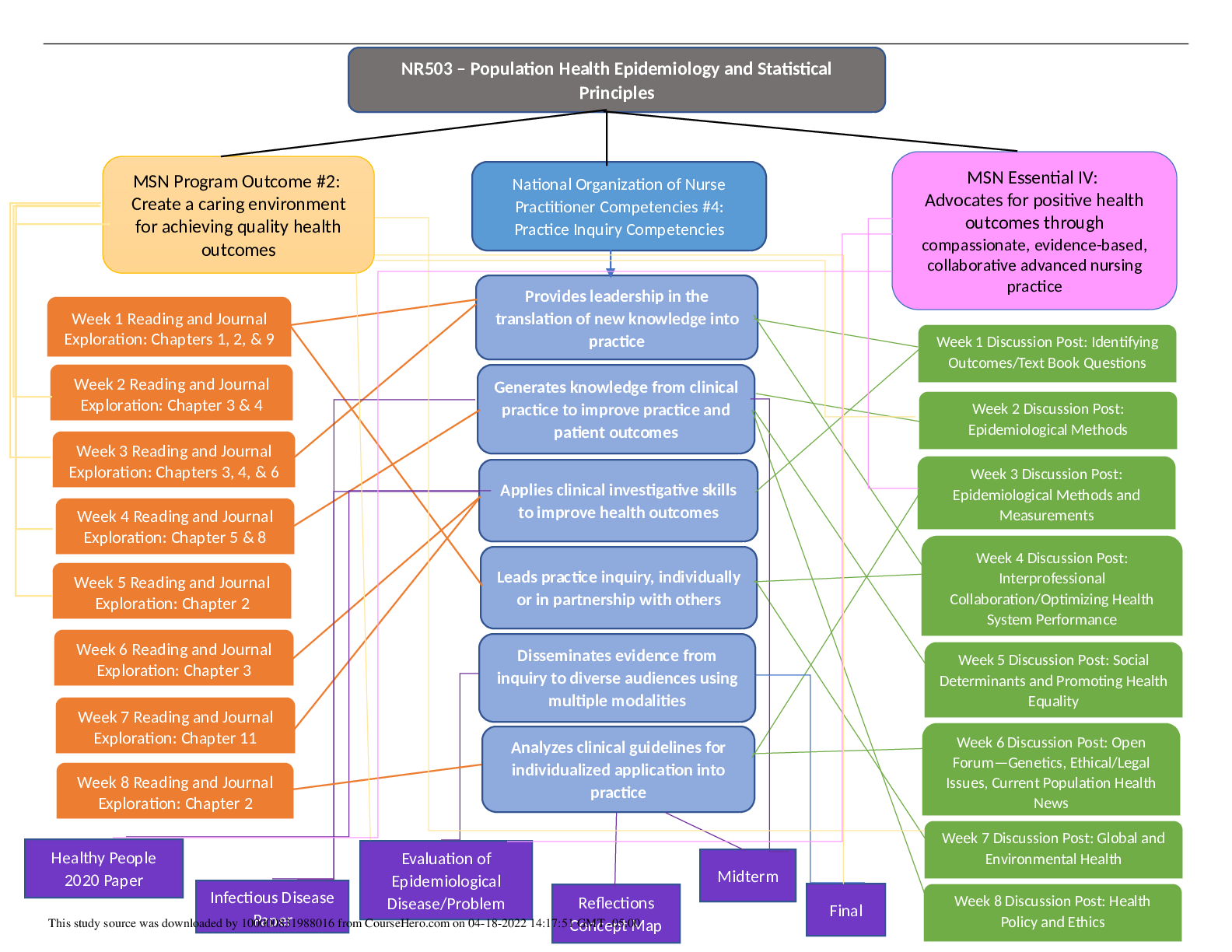

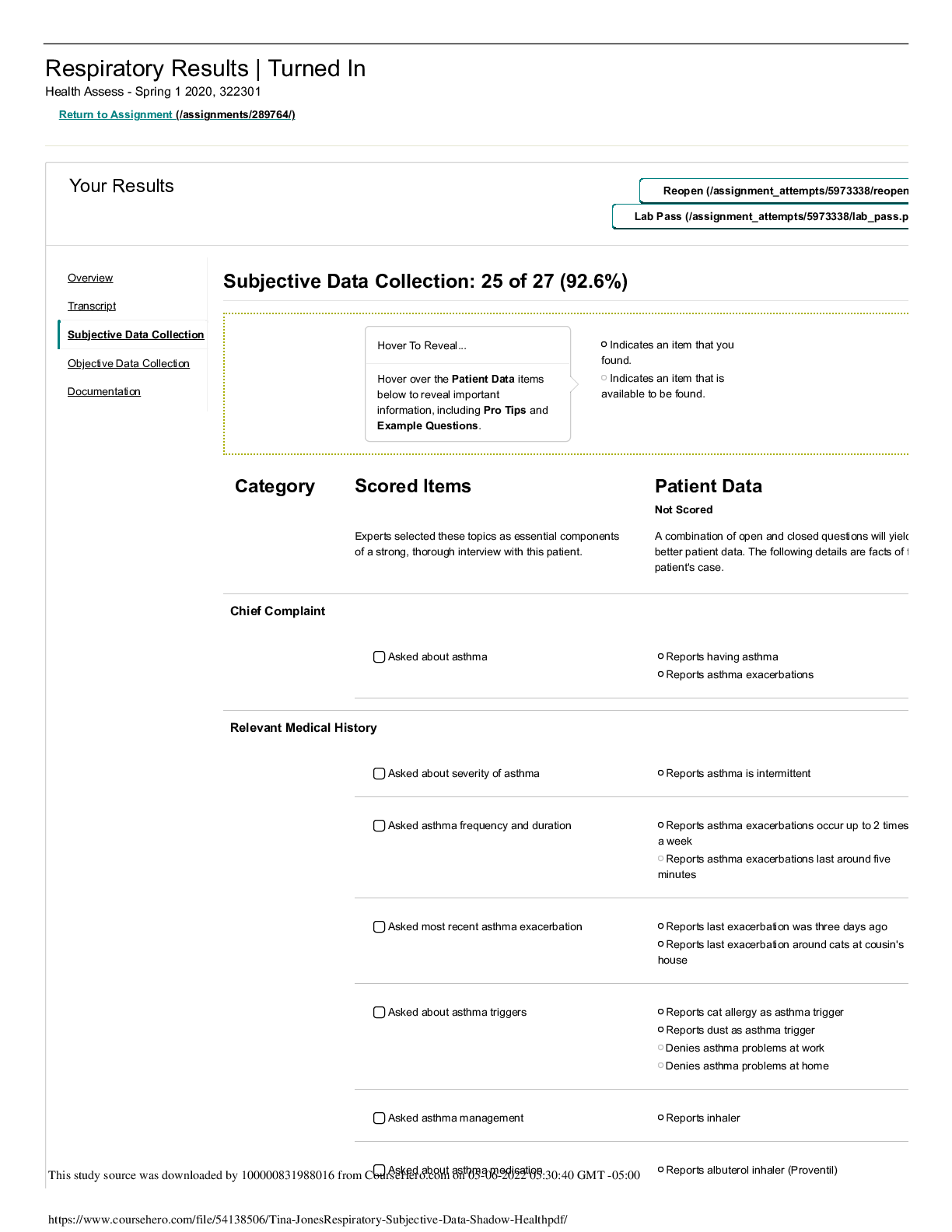




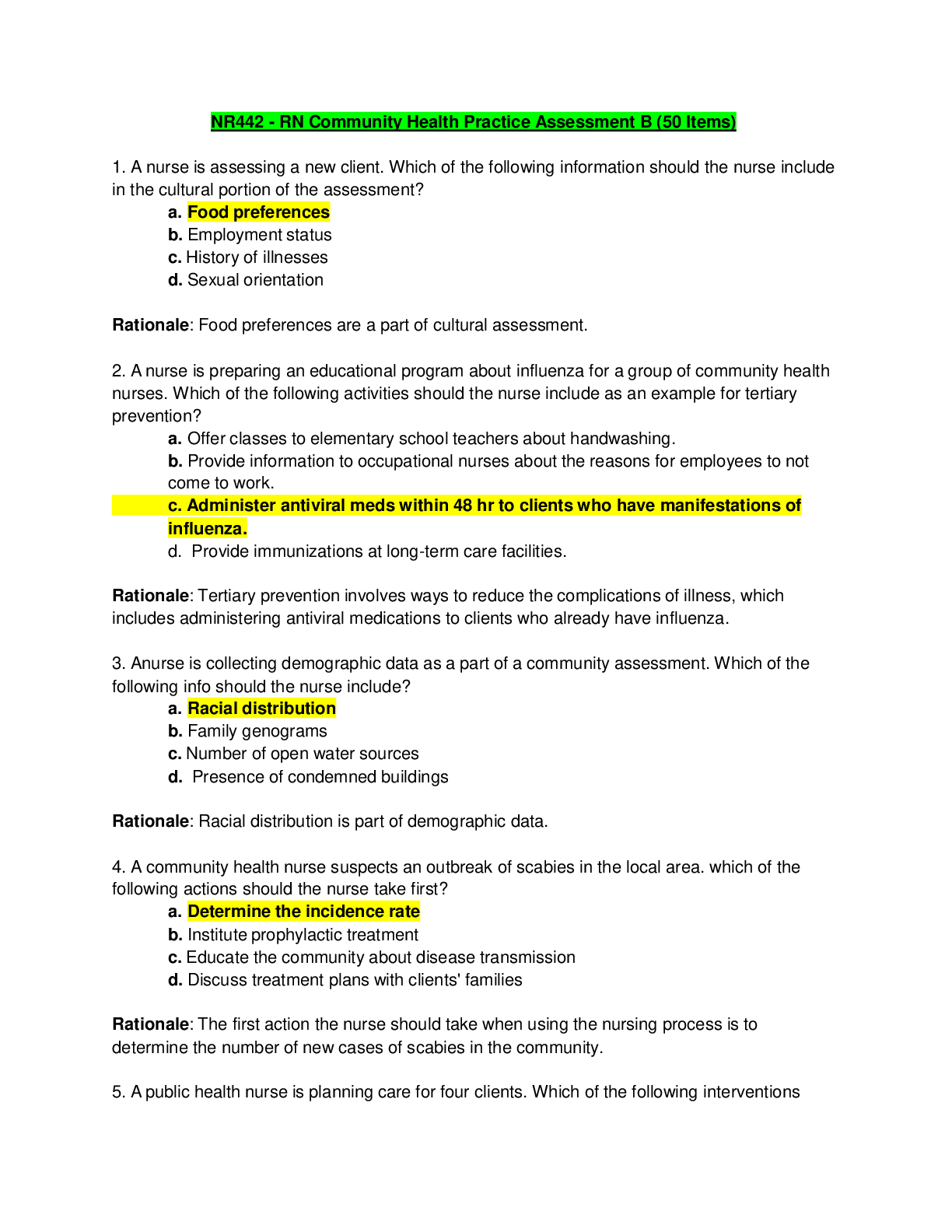


.png)




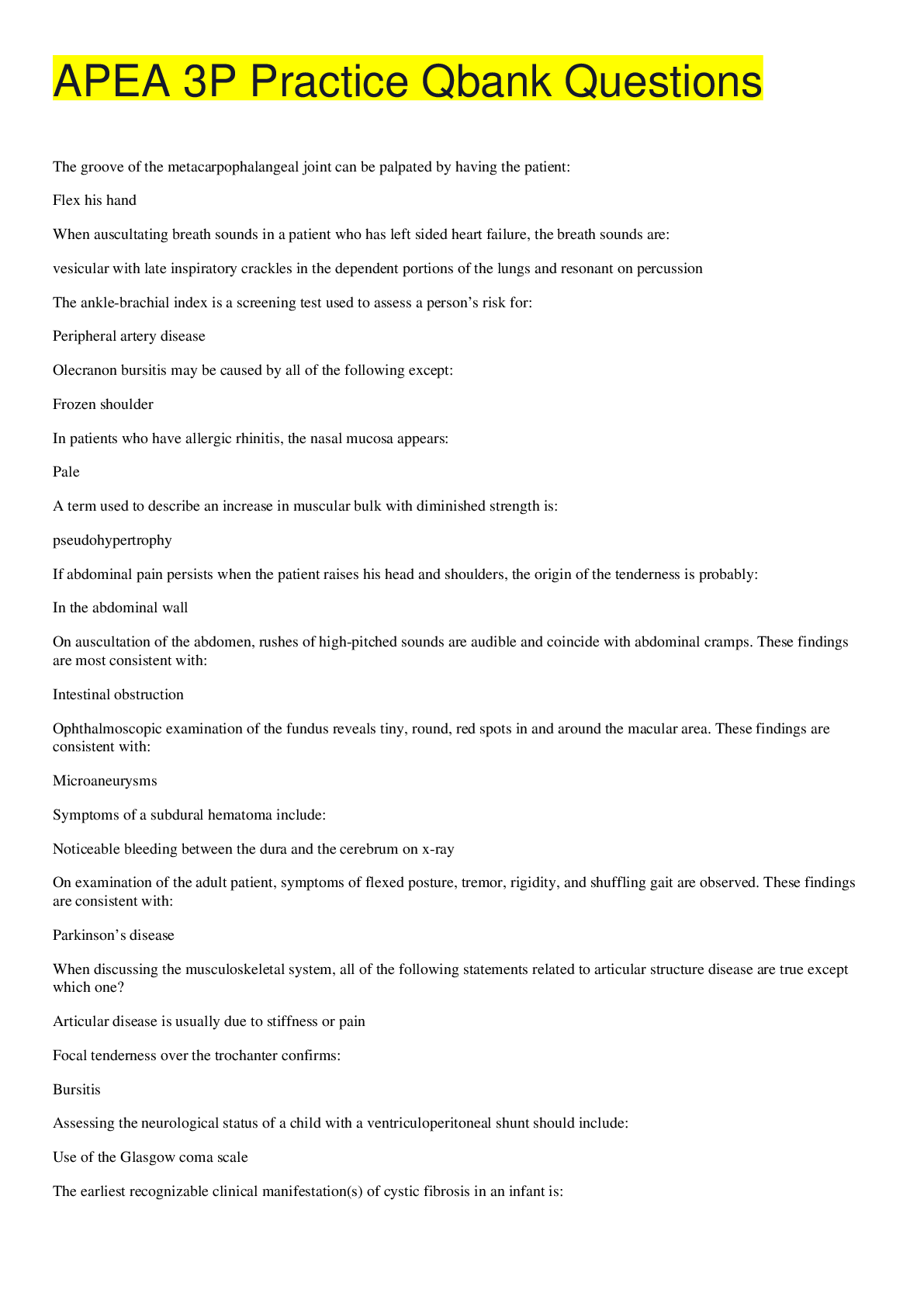
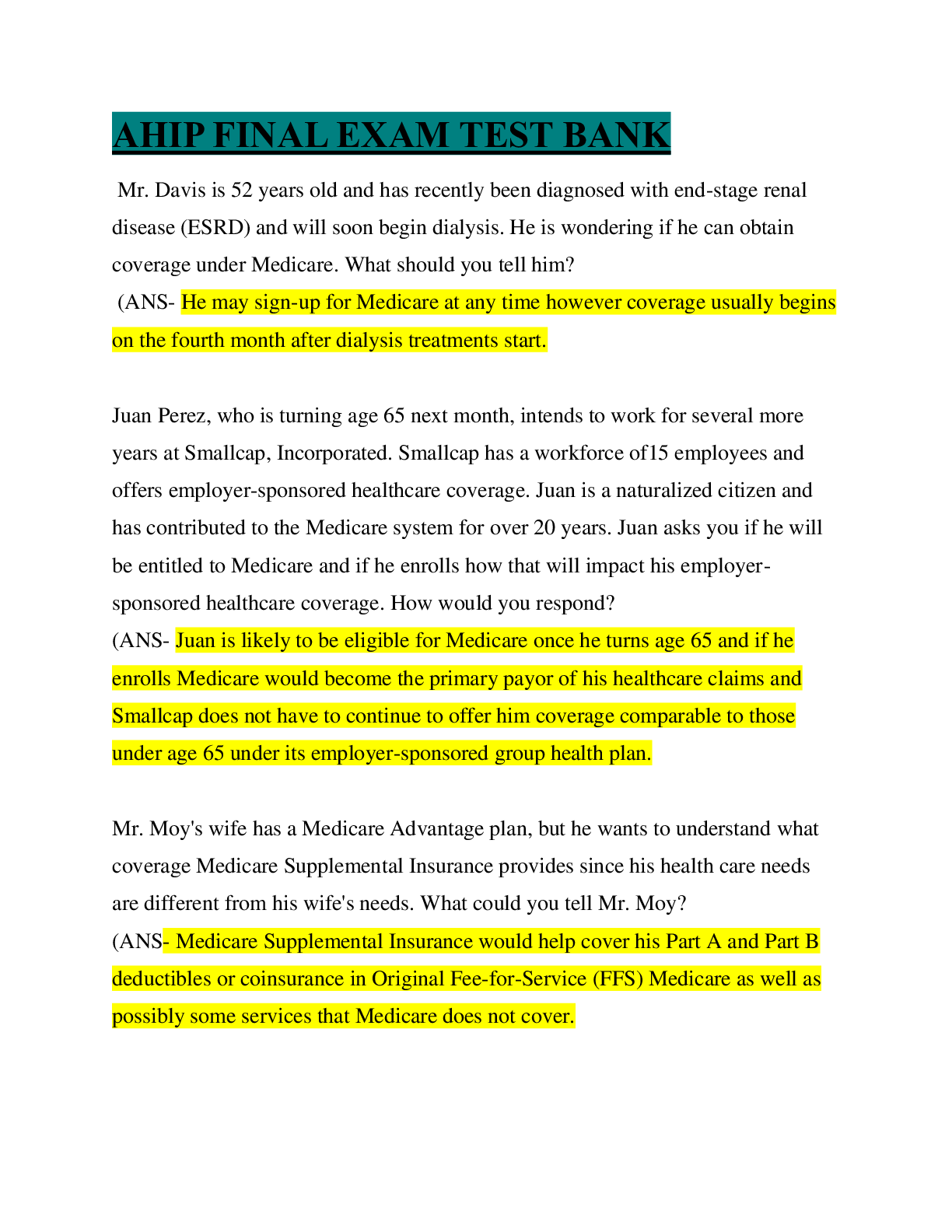



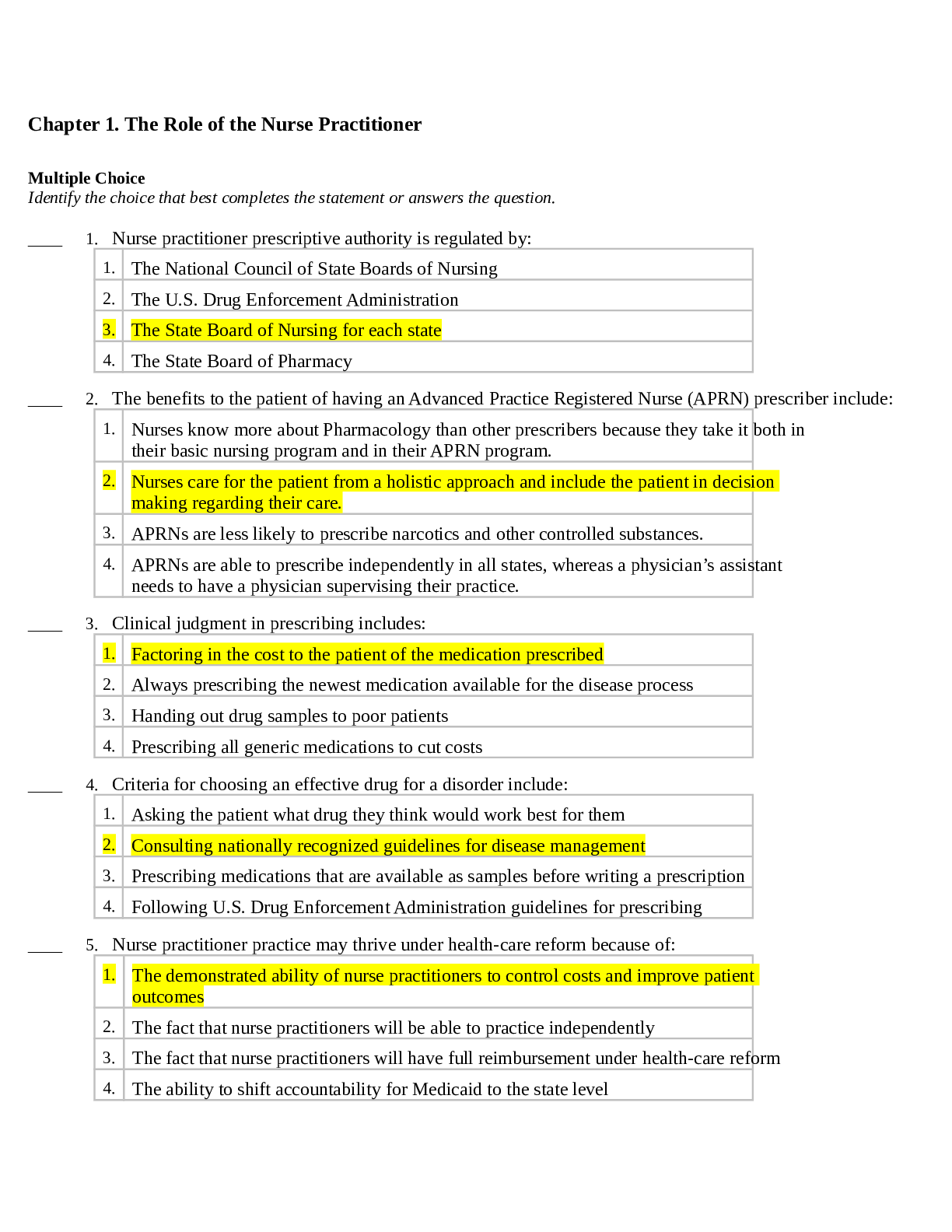
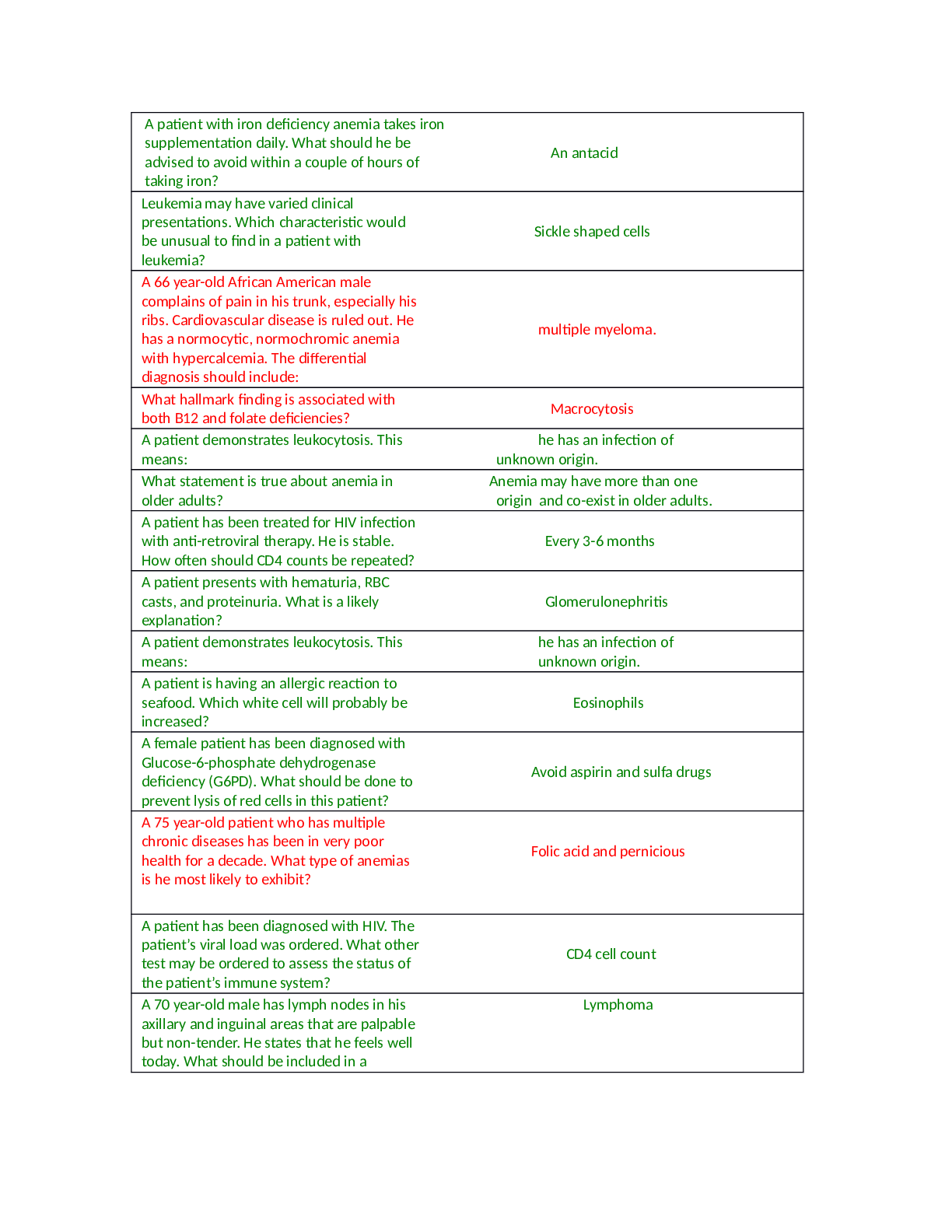
.png)
.png)
